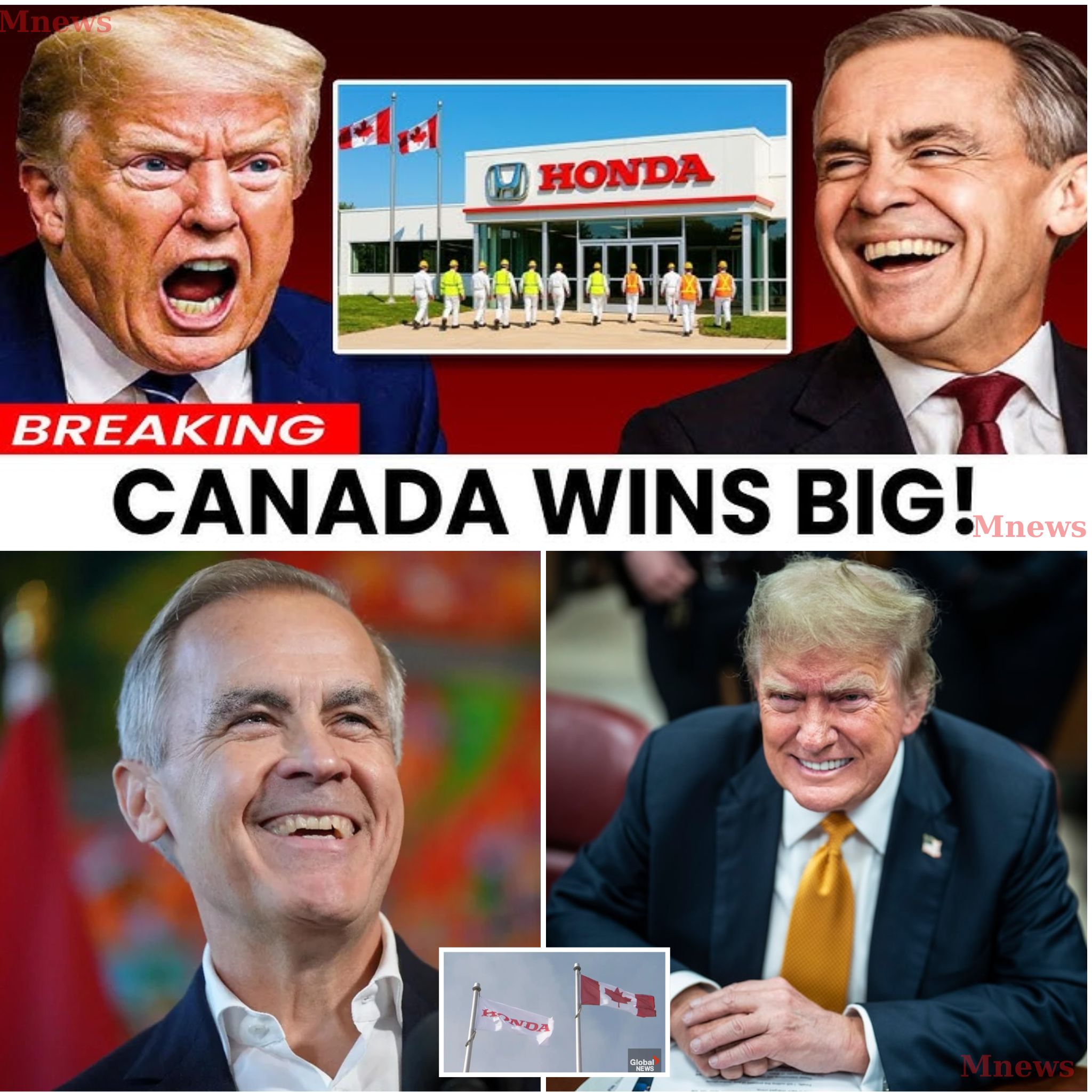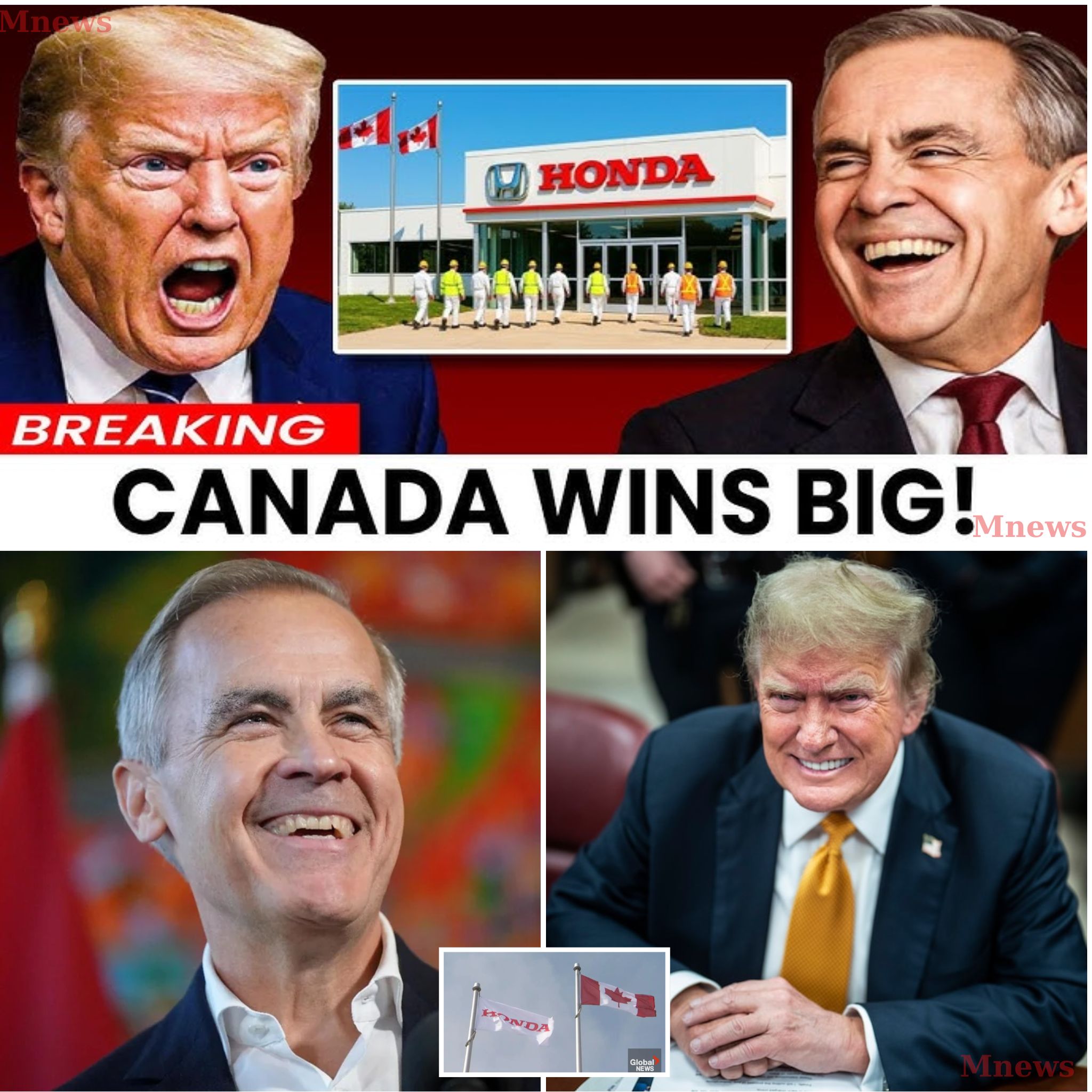 Honda’s ambitious $15 billion electric vehicle investment plan in Canada has hit an unexpected snag, delaying its rollout by two years as the company grapples with a staggering 60% projected profit collapse. This alarming shift is not merely a reflection of market dynamics but a direct consequence of President Trump’s aggressive import tariffs, some soaring as high as 50%. These tariffs have transformed every vehicle crossing the U.S. border into a financial gamble, with Honda facing estimated global losses exceeding $4.3 billion, more than half attributed to U.S. import duties.
Honda’s ambitious $15 billion electric vehicle investment plan in Canada has hit an unexpected snag, delaying its rollout by two years as the company grapples with a staggering 60% projected profit collapse. This alarming shift is not merely a reflection of market dynamics but a direct consequence of President Trump’s aggressive import tariffs, some soaring as high as 50%. These tariffs have transformed every vehicle crossing the U.S. border into a financial gamble, with Honda facing estimated global losses exceeding $4.3 billion, more than half attributed to U.S. import duties.

The irony is stark: tariffs intended to bolster American manufacturing are instead crippling the very companies they were designed to protect. Honda’s factories, once humming with activity, are now slowing down, and supply shortages are becoming the norm. As the automotive giant struggles, the question looms: if a powerhouse like Honda is faltering, what does this mean for the broader industry?
While Honda wrestles with these challenges, a counter-narrative is unfolding in Canada. Seizing the opportunity presented by U.S. trade barriers, Ottawa is positioning itself as a new industrial powerhouse in North America. Honda’s revised strategy includes a pivot to Canada, where it plans to establish a fully integrated electric vehicle supply chain in Ontario, complete with an advanced EV assembly plant and battery production facilities. This move is not just a response to tariffs but a strategic reinvention aimed at building a sustainable future.

The Canadian government’s proactive stance, offering up to $5 billion in joint financial support for Honda’s project, underscores a commitment to fostering a stable investment environment. New incentives, such as a 10% investment tax credit for EV supply chain projects, further enhance Canada’s appeal to global automakers. As U.S. policies become increasingly erratic, Canada is emerging as a beacon of stability, attracting over $46 billion in EV manufacturing investment since 2020.

This shift is not limited to Honda. Other major automakers, including Toyota, BMW, and Hyundai, are reevaluating their North American strategies, recognizing the advantages of operating in a more predictable policy environment. The geographical and logistical advantages of Ontario, with its proximity to the U.S. market and access to vital trade routes, make it an attractive destination for manufacturers seeking to mitigate risks associated with U.S. tariffs.
However, the road ahead is not without its obstacles. Honda’s recent announcement of a two-year delay in its Ontario project signals a cautious approach in light of a cooling global EV market. The oversupply of batteries and low-cost models from China is driving down prices and squeezing profit margins across the industry. Honda’s decision to postpone expansion reflects a broader trend of caution among automakers navigating an unpredictable landscape.

As the U.S. grapples with the consequences of its trade policies, Canada is positioning itself as the calm anchor of North America’s industrial future. The contrasting approaches—one of isolation through tariffs and the other of collaboration through incentives—illustrate a fundamental shift in the balance of power within the automotive industry. The question remains: can the U.S. adjust its course before more manufacturers shift their focus northward? Or will it find itself sidelined as Canada solidifies its role as the leader in the electric vehicle revolution?
In a world where trust and stability are increasingly prized, the stakes could not be higher. As the global economy continues to evolve, the choices made today will shape the industrial landscape for generations to come. The unfolding drama between Honda and the U.S. tariffs serves as a stark reminder of the delicate balance between protectionism and collaboration in a rapidly changing world. The next few years will be critical in determining whether the U.S. can reclaim its industrial identity or if Canada will emerge as the dominant player in North America’s manufacturing future.




